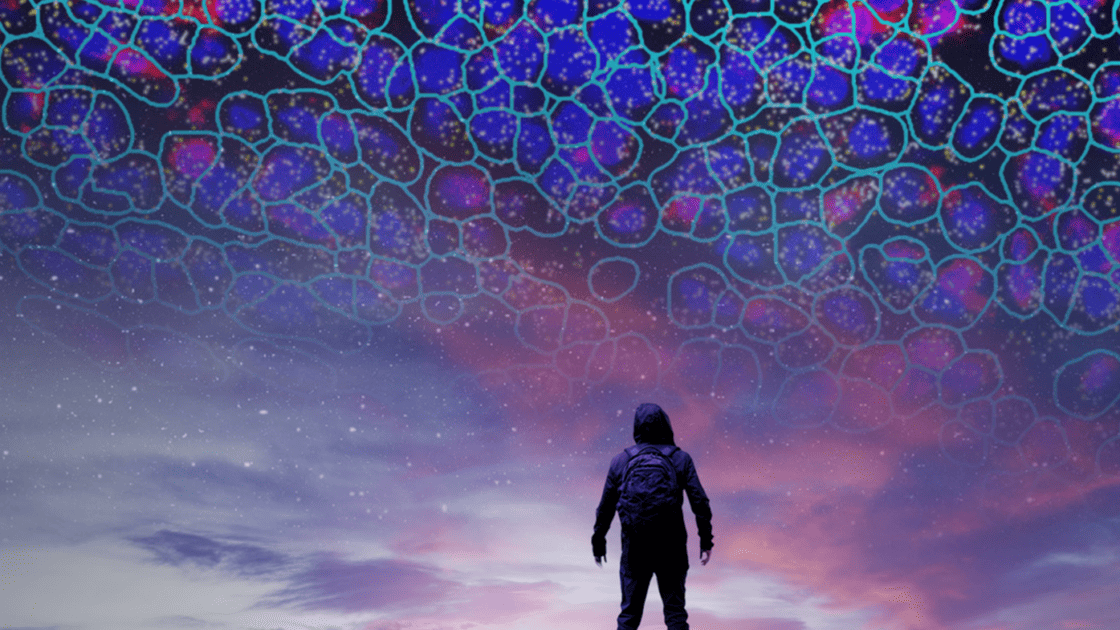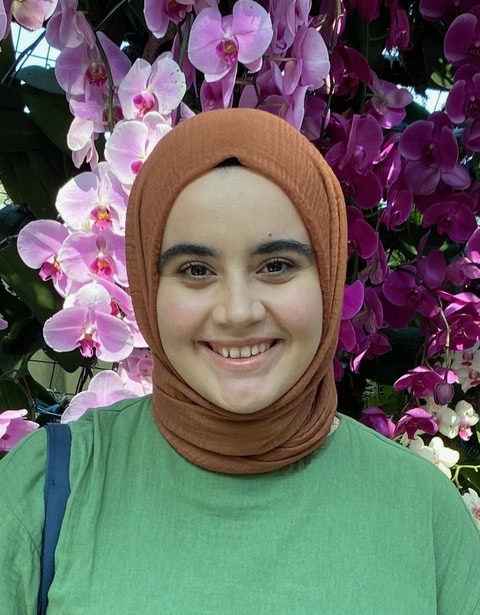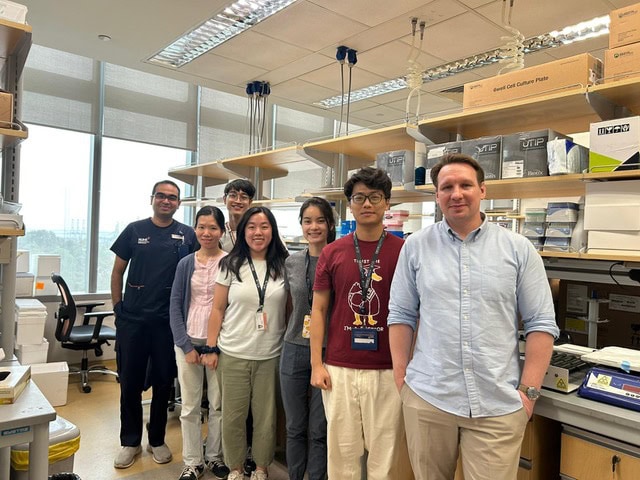
GeoMx™ Whole Transcriptome Atlas + IO Proteome Atlas Proteogenomics Grant Call Winner Announcement – Singapore 2024
Congratulations to the winners for NanoString GeoMx™ Whole Transcriptome Atlas + IO Proteome Atlas Proteogenomics Grant Call
NanoString in collaboration with Next Level Genomics is offering the first ever Grant for the researchers who would like to exploit the capabilities of Spatial Proteogenomics with GeoMx® Whole Transcriptome Atlas plus GeoMx® IO Proteome Atlas.
Grant Winners:
1st Winner

Merve Dede
Merve is a PhD candidate at the Genome Institute of Singapore and National University of Singapore (NUS), conducting her research in Shyam Prabhakar’s lab. As a hybrid scientist skilled in both wet lab techniques and computational analysis, she specializes in the application of spatial and single-cell technologies. Merve’s primary research focus revolves around investigating epithelial cell states and their clinical implications in colorectal cancer, with a particular emphasis on immunotherapy. Through her work, she aims to contribute to our understanding of this complex disease and identify potential avenues for improved treatment strategies.
Project Summary:
Immunotherapy has revolutionized cancer treatment, but the complete response rate remains low in colorectal cancer (CRC). To better understand the mechanisms of resistance, it’s crucial to investigate how tumor epithelial cells and the tumor microenvironment (TME) evolve under therapeutic pressure. In this study, we profiled pre- and post-immunotherapy samples from CRC patients. Our preliminary results indicate significant changes in pathway activity and cytokine profiles through treatment, suggesting dynamic shifts in the TME. Protein profiling offers an important complement to transcriptome analysis, particularly for understanding cytokine secretion dynamics and providing a more comprehensive view of treatment-induced changes. Therefore, we aim to explore how the TME and malignant cell states evolve under treatment in further detail by leveraging the whole transcriptome detection power and protein profiling capabilities of the GeoMx proteogenomics assay.
Runner Up – 1

Hong Liang
Hong Liang is currently working as a research assistant at the Cancer Science Institute, NUS School of Medicine. Alongside his role, he is also pursuing a part-time PhD under the supervision of Dr. Anand Jeyasekharan. His research focuses on exploring the complexities of the tumor microenvironment in sarcomas, with a particular emphasis on the role of macrophages, endothelial cells, B and T cells, as well as neurons in shaping this environment. He is especially interested in how these cell types contribute to the formation and maturation of tertiary lymphoid structures (TLS) within tumors. Our goal is to identify key markers that define the different cell populations involved in TLS development and to assess their functional roles. Additionally, They aim to determine the prognostic significance of these cells across various sarcoma microenvironments, hoping to uncover potential therapeutic targets.”
Abstract:
Characterizing immune cells transcriptome and proteome atlas during TLS formation in sarcoma
Sarcoma is a malignant tumor characterized by a high recurrence rate, metastatic potential, and aggressive tissue invasion. Treatment options for this type of cancer are currently limited. Recent findings suggest that inducing tertiary lymphoid structures (TLS) could improve the effectiveness of immunotherapy, offering a promising new approach for treating sarcoma. This study aims to identify transcriptomics and proteomics profiles of immune cells within the tumor microenvironment (TME) during TLS formation.
Leveraging the Nanostring-GeoMx advantage of capturing both transcriptome and proteome, we will perform digital spatial profiling (DSP) on tissue samples obtained from sarcoma patients with TLS-positive and TLS-negative statuses. The TLS areas in these samples will be annotated by a pathologist from the National University Hospital, Singapore. Our objective is to compare the TLS regions at various stages of formation, non-TLS regions, and TLS-negative tissues to identify differentially expressed genes (DEGs) and specific cellular signatures. Subsequently, we will establish gene co-expression networks to reveal the key regulatory pathways involved in TLS formation and maturation.
Multiplex immunofluorescence (mIF) staining will be employed to validate the findings and to visualize the spatial organization and interactions of immune cells within the tumor tissues. This comprehensive approach is anticipated to improve our understanding of the crucial factors that govern TLS formation and maturation. It has the potential to provide valuable insights for developing strategies to induce TLS formation and optimize their maturity, thereby improving therapeutic outcomes for sarcoma patients.”
Runner Up – 2

Intan Rosalina Suhito
Intan Rosalina Suhito is a research fellow in the Department of Biomedical Engineering at National University of Singapore. She joined Andy Tay’s lab in 2022 after completing her PhD within three years in South Korea. During her doctoral course, she has published more than ten research papers as a first author in top-tier international journals, including Sensors and Actuators B: Chemical (2019), Colloids and Surfaces B: Biointerfaces (2019, main cover), Biosensors and Bioelectronics (2021), Small (2021, front cover), and Advanced Science (2022). In 2023, she won the ASEAN-ROK Science and Technology Innovation (STI) Pioneer, which is the prestigious prize awarded by The Ministry of Science, Technology, and ICT (MSIT) of Republic of Korea. Her current post-doctoral project is focusing on human-derived immune organoid development to study immunological functions in ex vivo manner and as a tool for vaccine and adjuvant screening. The area of human immune organoids is emerging research with less than five literatures and thus, her work will be impactful and highly interesting to multidisciplinary fields, including translational immunology, biomedical engineering, and organoid technology.
Abstract:
Evaluation of human lymphoid tissue-derived organoids to recapitulate immunological functions in vivo
Organoid is a great alternative to animal model as it has better accessibility and physiological resemblance to the human body. However, there is limited study on immune tissues (e.g., thymus, bone marrow, spleen, lymph nodes, and tonsils). Human lymphoid-derived organoid is ground-breaking research that could impact how we study human immunology beyond peripheral blood samples. In 2021, Wagar et al. established human tonsil organoids for the first time that can recapitulate major aspects of adaptive immunity, including somatic hypermutation, and antigen-specific antibody production. However, their tonsil organoid lacks fibroblastic reticular cells which is a key stromal cell type that maintains the extracellular matrix environment and interacts with immune cells to support their functions ex vivo. It has been found recently that stromal cells play a role to support the viability of dendritic cells which are professional antigen-presenting cells that can educate the adaptive immunity to recognise naïve antigens. In our project, we bioengineered tonsil and lymph node organoids with cell diversity similar to autologous lymphoid stromal cells. Our organoids were also able to produce antigen-specific antibodies to previously-exposed antigens like attenuated H1N1 virus and tetanus toxoid protein, and respond to naïve antigens including SARS-CoV-1 spike proteins.
Here is a brief methodology we have optimised to generate immune organoids. lymphoid tissue will be processed with enzymatic digestion. Cell suspension will be filtered through a 100 µm cell strainer and washed with complete RPMI medium. Cell counting will be performed, followed by cryopreservation at -80 ºC until use. Thawed cell stocks will be plated on tissue culture flask to isolate the stromal cells. The floating lymphocytes will be removed after 24 hr, and the remaining adherent cells will be cultured for 7-10 days. Co-cultured immune organoids will consist of lymphoid cell mixtures and the autologous stromal cells at specific ratio. We will use a scaffold-free 3D culture hanging drop method to grow highly functional immune organoids. Spherical aggregates will be observed after 48h and will be transferred into a 12-well tissue culture plate. Organoids will be stimulated with subsequent antigens, i.e., inactivated influenza A (H1N1) virus, tetanus toxoid protein, and COVID-19 peptides that resemble previously exposed antigens will be used to stimulate immune organoids to determine the robustness of immune response in vitro, R-phycoerythrin (R-PE) will be used to check the ability of immune organoid to respond to naïve antigens.
Validation of immune organoid functionality and characteristics are essential due to investigate the relevance between organoids and their native immune organ. Flow cytometry and immunological assays (e.g., ELISA, ELIspot) will be performed to analyse immune cell subsets and their physiological properties in organoid. Immunofluorescence imaging will be helpful to visualize the similarities of organoid architecture with their corresponding in vivo tissue throughout critical biomarkers. Single-cell RNA sequencing (sc-RNA-seq) will be powerful for profiling multicellular diversity and heterogeneity in organoid by measuring complex gene expressions and their functions in individual cells. As the organoid will be dissociated into single cells, sc-RNA-seq cannot provide spatial distribution of the genes that are crucial to understanding detailed cellular interaction networks. Spatial transcriptomics technology will be a sophisticated solution beyond sc-RNA-seq analysis, which allows genomic information to be obtained from intact tissue or organoid sections with original physiological context. To the best of our knowledge, NanoString is the pioneer of spatial biology by discovering a unique platform to rapidly assess biological properties and heterogeneity within tissues in highly multiplex and high-throughput manner. By analysing immune organoid using GeoMx, we will definitely achieve comprehensive data that give deeper insights about cell diversity, cell-cell interactions, immune profiling and biomarkers, tissue phenotyping, and organoid atlas. Human-derived immune organoid is at the nascent stage as there are only less than ten papers reported so far, and there are no spatial transcriptomics data yet in this topic. Thus, we are strongly confident with the novelty of our project and facilitating immune organoids with GeoMx analysis throughout this grant will give strong validation towards multiple analyses and enhance the quality of scientific data to publish highly impactful research. Besides, it can also expand the GeoMx applications into biomedical engineering, immunology, and organoid research.”
